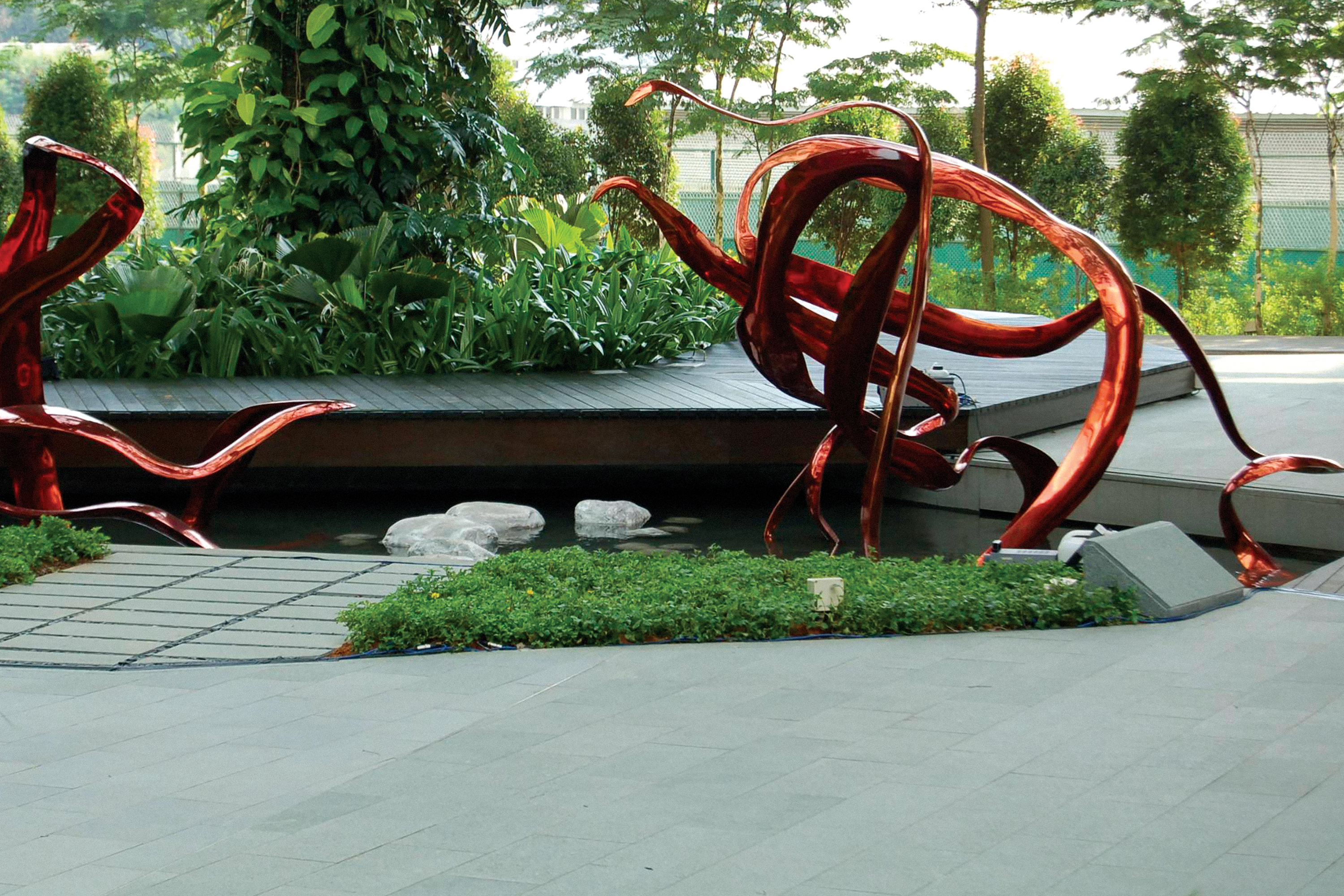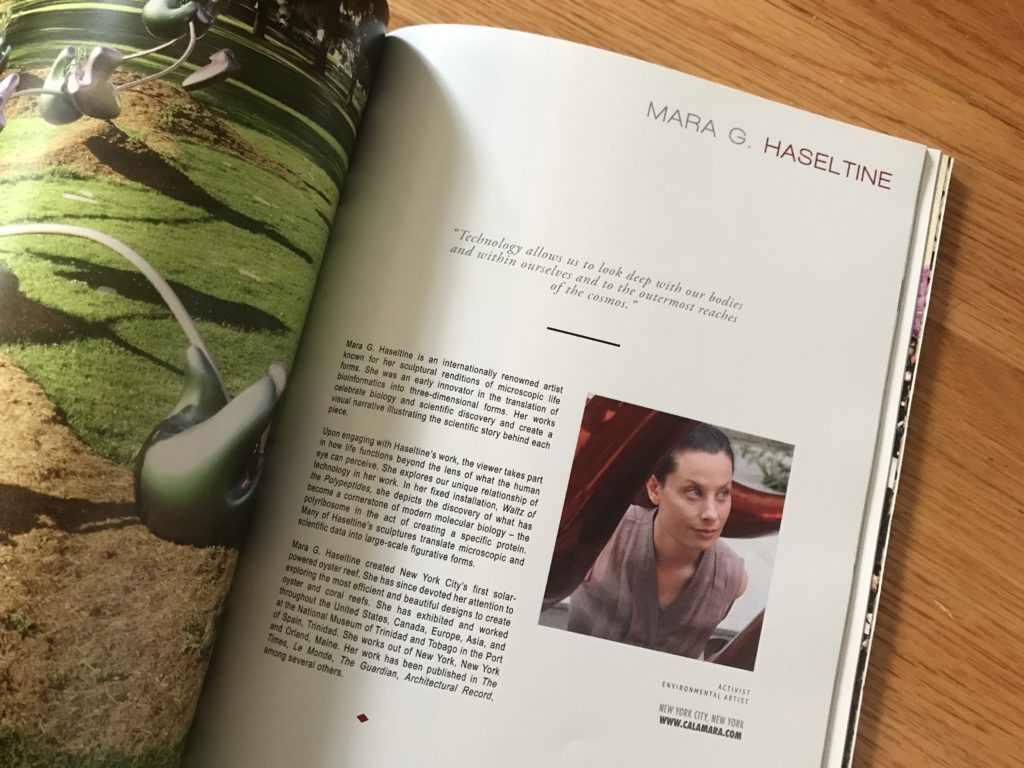Cover Image: SARS Inhibited. Mara G. Haseltine. 2016.
In light of the pandemic, I thought it was time to glance back to Issue #1 at featured artist Mara G. Haseltine. In 2006, Haseltine created SARS Inhibited, a life-size sculpture depicting the active cleft of the SARS Virus with protease inhibitor.
For those of you not spinning in science circles, let’s go over some basics first…
–––––––
What is SARS? It is a virus first identified in 2003 that is responsible for causing a respiratory illness referred to as Severe Acute Respiratory Syndrome. It is named for the crown-like spikes on the surface (corona = crown; coronavirus), and it spreads when droplets enter the air and people come into contact with them. The particular strain affecting the world right now is known as SARS-CoV-2 and it can develop into COVID-19 (COronaVIrus Disease 2019).
What are viruses? Viruses are a submicroscopic collection of genetic code (DNA or RNA) surrounded by a protein coat. They are not classified as “living,” but instead are considered non-living entities. This means that they must rely on a host (i.e. humans) to function and replicate. SARS itself has an unusually large RNA genome with a unique replication strategy.
How do they replicate? Once a virus infects you, they use the machinery within your cells to reproduce. Think of your cells like little factories that produce components that are essential for you to live. When a virus infects you, it takes over these factories, and uses your machinery to make what it needs (i.e. the proteins it needs in order to replicate).
–––––––
Now, let’s get back to Haseltine’s work, a life-size sculpture of the active cleft of the SARS Virus with protease inhibitor.
A protease is an enzyme, and an enzyme is a very specialized protein. So, “protease” is just a fancy term for a specialized enzyme that increases the rate of protein breakdown (prote(in) + -ase). Proteases are found in all forms of life as well as viruses.
An inhibitor is something that slows down or prevents the action of. In this instance, it would be molecules that prevent proteases from functioning properly.
In a nut shell, what we’re talking about here is the inhibition of the main protease found in the SARS Virus. Understanding the structure–function relationships of these proteins will help to identify targets for the design of anti-viral compounds against coronaviruses. Recently, Zhang et al. determined the x-ray crystal structure of a key protein in the coronavirus life cycle: the main protease.
To date (May 3), SARS-CoV-2 has infected 3,555,338 people, with a death toll of 247,631. The more we understand about the structure of the virus itself, the greater our chances will be to find a remedy.
Haseltine’s work, SARS Inhibited, depicts a discovery made in 2003 on the SARS virus, and if this discovery had had been funded properly, it could have potentially led to the creation of anti-viral drugs to treat coronaviruses, including SARS CoV-2.
What does all of this mean? It is possible that this pandemic could have been avoided entirely. Structural biologist Rolf Hilgenfeld had an integral role in the discovery of anti-viral drugs and his work on the SARS virus was highlighted in the 2003 May 14th NY Times article, Experimental Drug May Fight SARS, Researchers Say.
Hilgenfeld is currently working on anti-viral drugs for COVID-19. His work on the SARS virus was the inspiration for Haseltine’s sculpture and you can read her interview with him here.
“I was compelled to do this interview because I felt it would be illuminating and give the public a unique way of looking at coronaviruses and their morphology through the lens of art and scientific discovery. In addition I felt it was my moral obligation to conduct this interview because with knowledge comes power. I want empower your readers, to rally them to demand funds for this kind of research not only to develop treatments for our current pandemic but to prepare mankind so that future Corona pandemics which scientists predict will be much more severe than COVID 19…can be avoided. I Believe art is a profound way to get this message across.” (Mara Haseltine)

